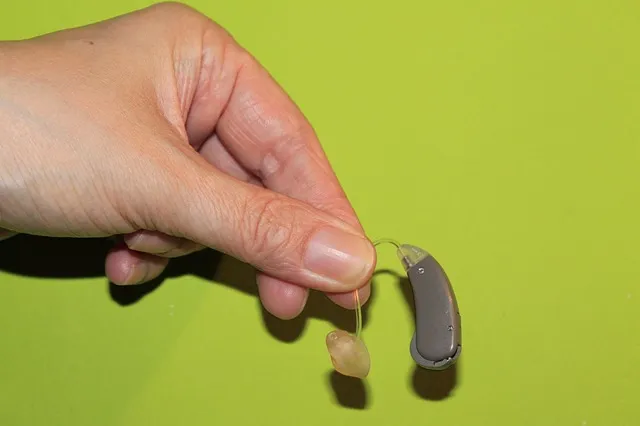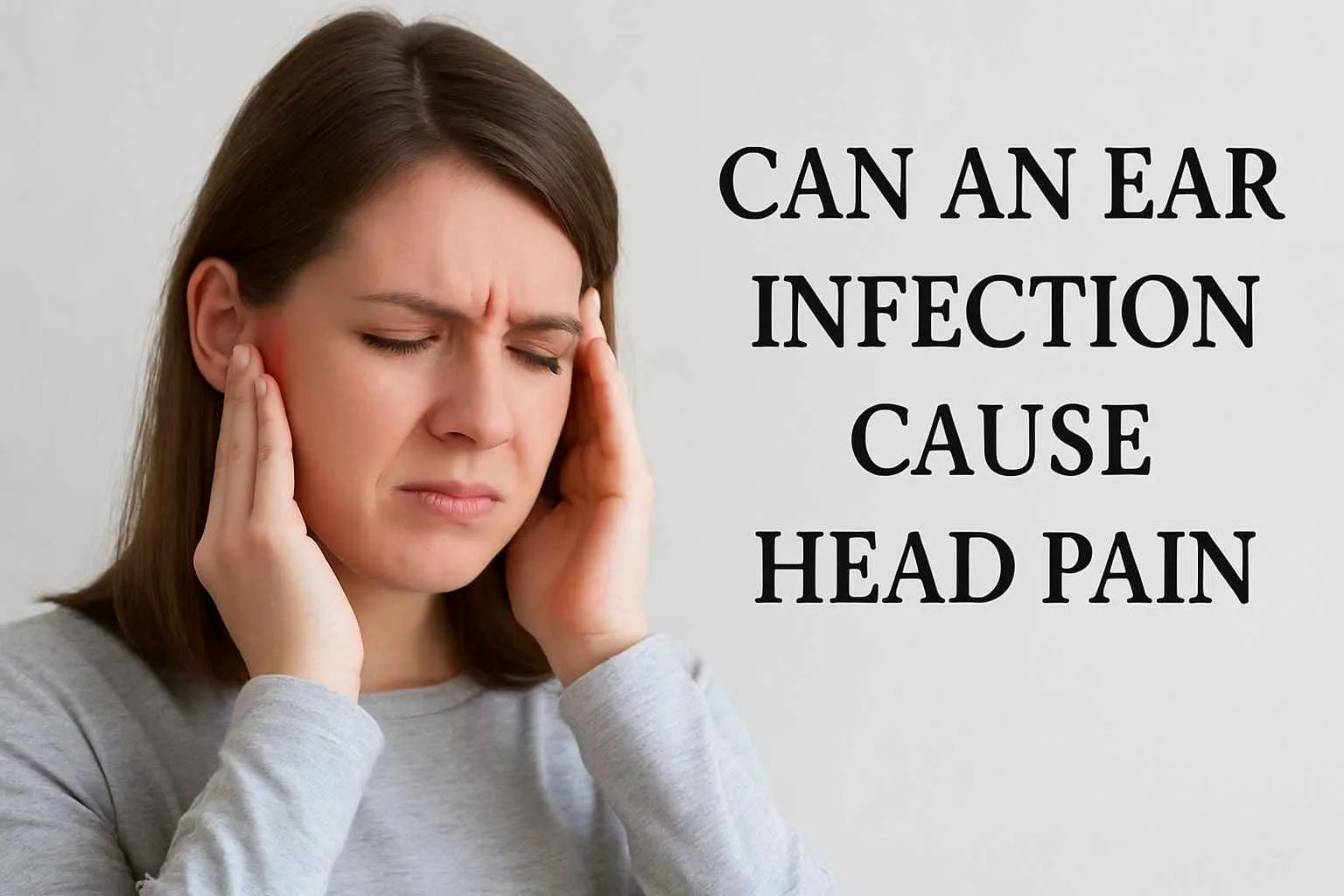If you experience the symptoms of a ruptured eardrum such as sharp earache or fluid leakage from your ear, it can be painful, impacting your comfort. This might raise a concern and make you wonder, "What side should I sleep on with a ruptured eardrum?" The appropriate sleeping position can make a huge difference in healing, so, you should implement it to avoid further damage. This article will guide you on the right sleeping position which can help prevent discomfort and promote recovery. So, let's get started
What Side Should I Sleep on With a Ruptured Eardrum? Best Sleeping Positions
It can be challenging to sleep if there is pain or discomfort after a ruptured eardrum. You can sleep in the following manner depending on which ear is affected:
If Only One Ear is Affected
According to the sleep foundation, in the case of one ruptured eardrum, the best sleep position is sleeping on the unaffected side. This means, if your left ear is hurt, sleep on the right side. This can help reduce the risk of debris or fluid entering the infected ear and causing more irritation or damage. Additionally, it minimizes the pressure and discomfort on the affected ear, allowing a restful sleep.
If Both Ears Are Affected
In this case, sleeping on your back with your head elevated using an extra pillow is the best. This position prevents pressure on both ears and allows for better drainage.
Note: The best advice is to see an audiologist for personalized advice as specific recommendations can vary on the severity of the condition and other underlying issues.
Sleeping Positions to Avoid
- Sleeping on your stomach – increases pressure on your ears.
- Sleeping on the affected ear – worsens irritation and slows healing.
Why the Right Sleep Position Matters
Your sleeping posture affects how your ear drains and heals. Sleeping incorrectly can:
- Increase pain and pressure.
- Allow fluid buildup, leading to infection.
- Delay healing by causing further irritation.
Other Tips to Sleep Better with a Ruptured Eardrum
1. Use a warm compress for 10 minutes before bed to relieve pain.
2. Keep your ear dry (use cotton balls while showering).
3. Avoid inserting anything into your ear, including cotton swabs.
4. Use white noise or soft music if tinnitus keeps you awake.
5. Take OTC pain relievers like ibuprofen for pain relief.
Causes of a Ruptured Eardrum
Understanding what led to the rupture can help prevent it from happening again. Common causes include:
Ear infections: Viral or bacterial infections can cause pressure and fluid buildup which lead to the eardrum bursting.
Sudden changes in pressure: Quick air pressure changes while performing scuba diving or during air travel can cause rupturing of eardrums.
Injury or trauma: According to research, using cotton swabs, inserting objects, or direct ear injury can cause a ruptured eardrum.
Prolonged Water exposure: Long water exposure can make the eardrum weak which can lead to the risk of its rupturing.
Head injury: Head injury at your skull's base may also cause rupturing of the eardrum.
Loud noises: Exposure to highly loud noises or sounds like explosions, gunfire, or sudden high-decibel sounds.can burst the eardrums.
Symptoms of a Ruptured Eardrum
Living with a ruptured eardrum can be uncomfortable as it can cause several symptoms that last for a short period. However, if they persist for longer, see an ear specialist. The associated symptoms include:
Sudden, sharp ear pain
Clear, cloudy, or bloody fluid leakage from the ear
Ear ringing or buzzing (known as tinnitus)
Itching
Temporary hearing loss
Dizziness or vertigo
Fever
Weakness in the face (in severe cases)
To avoid these symptoms, the first thing you can do to promote healing is to sleep in the right position. Also, you can follow some home care tips.
Home Remedies to Manage Ruptured Eardrums at Home
Minor cases of a ruptured eardrum can heal on its own within 1-2 days or months. However, if it causes severe pain or drainage, see a doctor. Meanwhile, you can consider these tips to find relief:
Keep your ears dry: Avoid getting water in your infected area while showering or swimming by using cotton balls or earplugs for protection.
Use a warm compress: Reduces earache by increasing blood circulation to the damaged area. Apply a warm compress in the affected area for 10 minutes.
Take over-the-counter pain relieving medications: Pain relievers like ibuprofen or acetaminophen can relieve ear pain.
Monitor for drainage: If there is pus leakage from your ear, use a clean cloth or towel to absorb the fluid.
Take enough rest: Get a lot of rest as it promotes the healing process of the body.
When to See a Doctor?
If you experience the symptoms of eardrums that persist or become worse, see an audiologist. However, consult the doctor immediately in the following cases:
- Severe ear pain that doesn’t improve.
- Persistent fluid drainage (especially pus or blood).
- Significant hearing loss.
- Extreme dizziness or balance issues.
- Fever, nausea, or vomiting.
- A foreign object stuck in the ear.
Professional Treatments for a Ruptured Eardrum
If your eardrum doesn’t heal on its own, a doctor may recommend:
1. Antibiotics
If a ruptured eardrum is caused by an ear infection, a doctor may prescribe antibiotics in the form of tablets or eardrops.
Oral antibiotics include amoxicillin-clavulanate and topical antibiotic drops are ciprofloxacin or ofloxacin.
Oral medications might be prescribed for 5-10 days and topical antibiotic drops several times each day.
To relieve pain, the providers may provide acetaminophen or ibuprofen.
2. Tympanoplasty (Eardrum Surgery)
In case of a large hole in the eardrum, the doctors may suggest a surgery called "tympanoplasty". This is how it works:
A surgeon gives a local or general anesthesia to numb the affected area.
An incision is made behind the ear.
Then, any infected tissue or debris is removed.
A surgeon next places a graft material (made from a person's cartilage or fascia or synthetic material) over the hole in the ruptured eardrum.
The graft is then secured in place using glue or sutures.
Note: Recovery may take some weeks. You might experience mild pain, ear drainage, a fullness-like feeling in your ear, or temporary hair loss. Though the success rate of this surgery ranges from 35% to 95%, it can also come with some side effects. Those effects may include bleeding, infection, graft failure, or dizziness. If you experience any, see a doctor.
Complications of an Untreated Ruptured Eardrum
If a ruptured eardrum does not heal or is left untreated, it can lead to:
Hearing loss
Middle ear infection
Cholesteatoma (cyst in the middle ear)
Mastoiditis (infection in the mastoid bone)
Long-term dizziness or vertigo
So, to ensure no such complications, prevention is key.
How to Prevent a Ruptured Eardrum?
To avoid the recurrence of eardrum rupturing:
Treat ear infections immediately
Avoid inserting anything, even cotton swabs or objects in your ear
Use earplugs during flights, loud events, or water activities.
Avoid direct trauma or injury to the ear.
Final Thoughts
What side should I sleep on with a ruptured eardrum is a common question by people as it can cause a huge discomfort. In case of one ruptured eardrum, lie down on the unaffected side and if both eardrums are ruptured, sleep on your back with an extra pillow under your head to avoid additional pressure. Moreover, you can try home care tips like avoiding inserting anything in the ear, keeping the ear dry, taking OTC pain medications, using a warm compress, and so on to ease discomfort and support recovery.
However, if symptoms persist, worsen, or you experience hearing loss, dizziness, or prolonged drainage, consult a doctor for medical advice.
Rest well, take care of your ears, and prioritize healing!
Frequently Asked Questions
How to speed up the healing of ruptured eardrums?
Keep the ears dry, take pain medications, and avoid air blowing your nose to speed up the recovery of ruptured eardrums.
How to close an eardrum hole naturally?
A small eardrum hole can close naturally within a few weeks by keeping ears dry and avoiding flying or swimming which puts pressure on the ears. However, large holes need surgery.
How long will a ruptured eardrum hurt?
The ruptured eardrum will start healing within 1-2 days. Using pain medications, you get relief from pain in 3 days.
What makes a perforated eardrum worse?
Water exposure, ear trauma, or infection can make the ruptured eardrum worse.
How long does a ruptured eardrum take to heal?
Small tears can heal on their own within some days or even months. However, large tears need medical treatment like surgery.
Reviewed by







